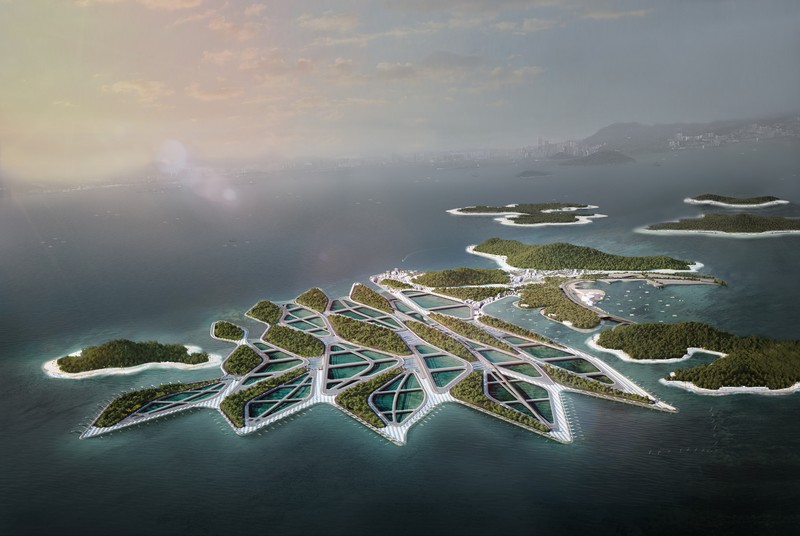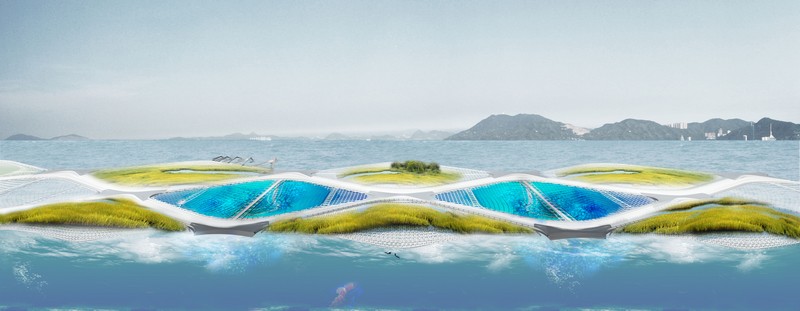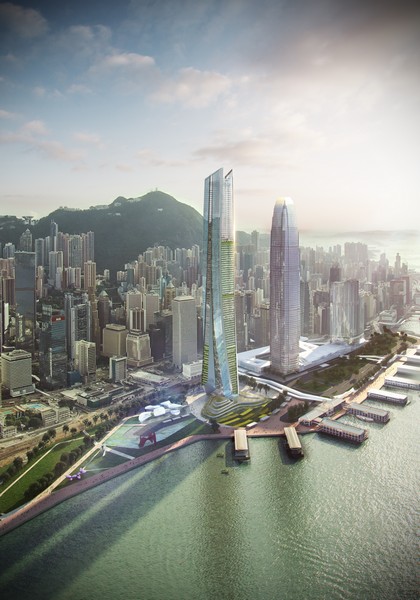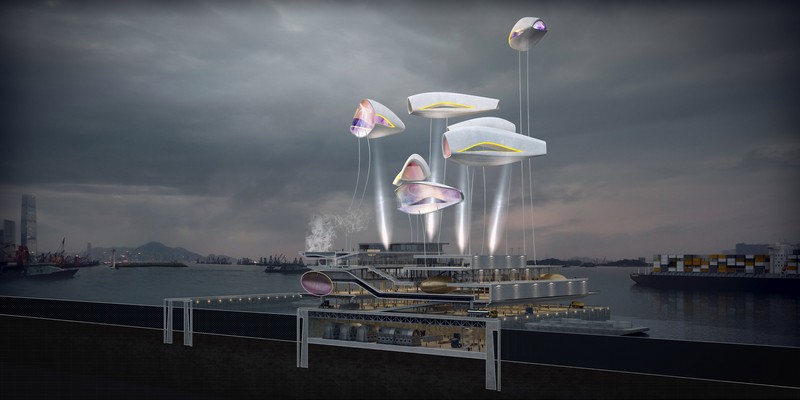Reclamation traditionally means to return land to an improved state.

Throughout its history, Hong Kong has practiced its own version of reclamation to increase the supply of “usable” land for urban growth. Such activity resulted in the expansion of flat terrain to create one of the tallest and most dense cities on the planet. While such development has aided in Hong Kong’s economic and architectural prosperity, it has separated the built environment from the natural one.
For 10 DESIGN’s submission to the Bi-City Biennale of Urbanism/Architecture, “Reclamation” explores the means to improve the natural resources of Hong Kong. Led by Sean Quinn, Silan Yip, Nkiru Mokwe and Michael, with contributions from the whole firm, 10 DESIGN completed comprehensive research on past and current building practices in Hong Kong and developed a roadmap to mitigate much of the environmental footprint of a resource-intensive city, and introduce new modes of living in natural harmony (with the environment).
Head of Sustainable Design at 10 DESIGN, Sean Quinn, stated, “With the practice of reclamation suspended from urban development in Hong Kong, we wanted to provide a narrative for the future: a new, truer form of ‘Reclamation’ whereby land is restored through an ecological practice that also supports social and economic needs of the city.”
Beyond Hong Kong’s borders, foreign dependence has accelerated so far that 99.4% of its carbon footprint is emitted elsewhere. Hong Kong has exceeded not only the edge of its development but also its biocapacity.
10 DESIGN prepared three separate proposals for the reuse and revitalisation of contemporary Hong Kong, investigating urban farms, marine parks, and waste to energy plants. These strategies may lead to natural expansion, creating a new urban habitat in Hong Kong.

Vertical Farming
The Vertical Farm Centre (VFC) provides a vision for Victoria Harbour front. The proposal centres around a 420m vertical farm that provides agricultural services and an interactive museum at its base, commercial space enclosed by a hydroponic greenhouse, and a luxury hotel with aeroponic atrium and observation deck. In a city that imports 98% of its food, VFC introduces a descending production system capable of growing more than 60 different crops commonly found in the region. The aero and hydroponic systems draw from humidity and rain outside the building, yields 5 to 10 crop cycles per year, are light weight, space efficient, and can be stacked vertically. The total growing area is equivalent to 172 hectares of farmland, can process 1000 tons of CO2 and could generate more than HK$2 billion annually (equal to Hong Kong’s current agricultural production).
Beyond the building, the surrounding wetland park would naturally process 40 million gallons of water which could be reintroduced to the neighbouring buildings through a grey water system. Before the ferry piers, community gardens allow families to grow their own food and a farmers market caters to the public. All waste is upcycled, as unsold food provides fertilizer for future crops or methane for power.
Artificial Reefs
One of the most detrimental impacts of reclamation is the active dredging of bottom soil that introduces poisonous toxins and heavy metal contaminants into Hong Kong waterways. Since the three fold increase in land reclamation in Hong Kong, marine fish culture which once proliferated in 54 sheltered bays have been in steady decline due to irreversible damage.
The Sunshine Bay Fishery proposal presents an alternative strategy for reclamation. Covering 650 hectares in the waters off Peng Chau, adjacent to the West Lamma Channel, the aquaculture landscape of interlinked active wetlands and low density fish ponds, supported by a structural artificial reef, actively cleans and enriches the surrounding waters. By filtering heavy metals and contaminants while reintroducing vital nutrients and microorganisms, the reefs provide protected spawning and feeding for over 140 species of coastal and inland fish and can support up to 150 tonnes of sustainable fish production annually.
Energy Park
The Cheung Sha Wan Energy Park proposes a closed loop system whereby food waste is diverted from the landfill to a hybrid community centre and energy plant. The centre expands on the existing wholesale market in Cheung Sha Wan by including a methane power plant, public swimming pool heated by methane, and glowing methane balloons that illustrate waste levels while illuminating the Hong Kong skyline. Food waste accounts for 40% of the material dumped into Hong Kong’s landfills, or approximately 3,500 tonnes of waste daily.

Rather than adding to the landfills which are already near capacity, food waste could be easily reclaimed and converted to secondary use. Waste is brought to the centre where it undergoes a process of anaerobic digestion; methane gas is released from this process and fills up large scale balloons that float in the sky. Once the balloons are full, the methane is extracted and converted to electricity, heat, or compost, enough to support approximately 58,000 people.
While the final vision is quite dramatic, all the technologies illustrated in the proposal are available in some form today. Each strategy has been evaluated for its environmental, social and economic service to illustrate effectiveness. Each solution is scalable. Vertical farm components could be applied to new or existing residential and commercial buildings, improving the access to local food, while invigorating the context of the city. Fisheries or marine preserves could be established in the existing bays throughout Hong Kong. Methane generation could be implemented at any of Hong Kong’s landfills to provide energy for the city.
The path towards a carbon positive city is a joint one, whereby government, developers, designers and the public must collaborate to achieve an ecologically vibrant Hong Kong.













